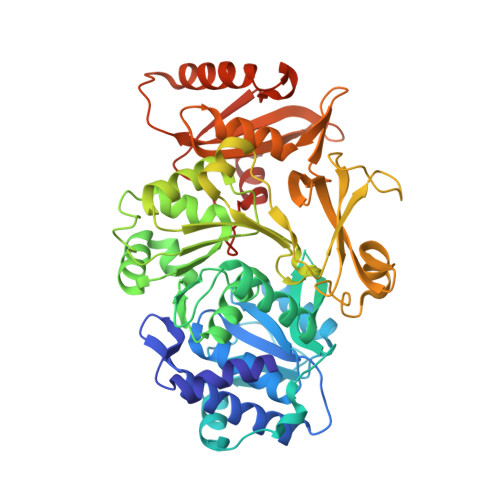Crystal structure and enantiomer selection by D-alanyl carrier protein ligase DltA from Bacillus cereus.
Du, L., He, Y., Luo, Y.(2008) Biochemistry 47: 11473-11480
- PubMed: 18847223
- DOI: https://doi.org/10.1021/bi801363b
- Primary Citation of Related Structures:
3DHV - PubMed Abstract:
Ubiquitous D-alanylation of lipoteichoic acids modulates the surface charge and ligand binding of the gram-positive cell wall. Disruption of the bacterial DltABCD gene involved in teichoic acid alanylation, as well as inhibition of the DltA protein, has been shown to increase a gram-positive bacterium's susceptibility to antibiotics. The DltA D-alanyl carrier protein ligase promotes a two-step process starting with adenylation of D-alanine. We have determined the 2.0 A resolution crystal structure of a DltA protein from Bacillus cereus in complex with the D-alanine adenylate intermediate of the first reaction. Despite the low level of sequence similarity, the DltA structure resembles known structures of adenylation domains such as the acetyl-CoA synthetase. The enantiomer selection appears to be enhanced by the medium-sized side chain of Cys-269. The Ala-269 mutant protein shows marked loss of such selection. The network of noncovalent interactions between the D-alanine adenylate and DltA provides structure-based rationale for aiding the design of tight-binding DltA inhibitors for combating infectious gram-positive bacteria such as the notorious methicillin-resistant Staphylococcus aureus.
Organizational Affiliation:
Department of Biochemistry, University of Saskatchewan, A3 Health Sciences Building, 107 Wiggins Road, Saskatoon, Saskatchewan, Canada S7N 5E5.
















